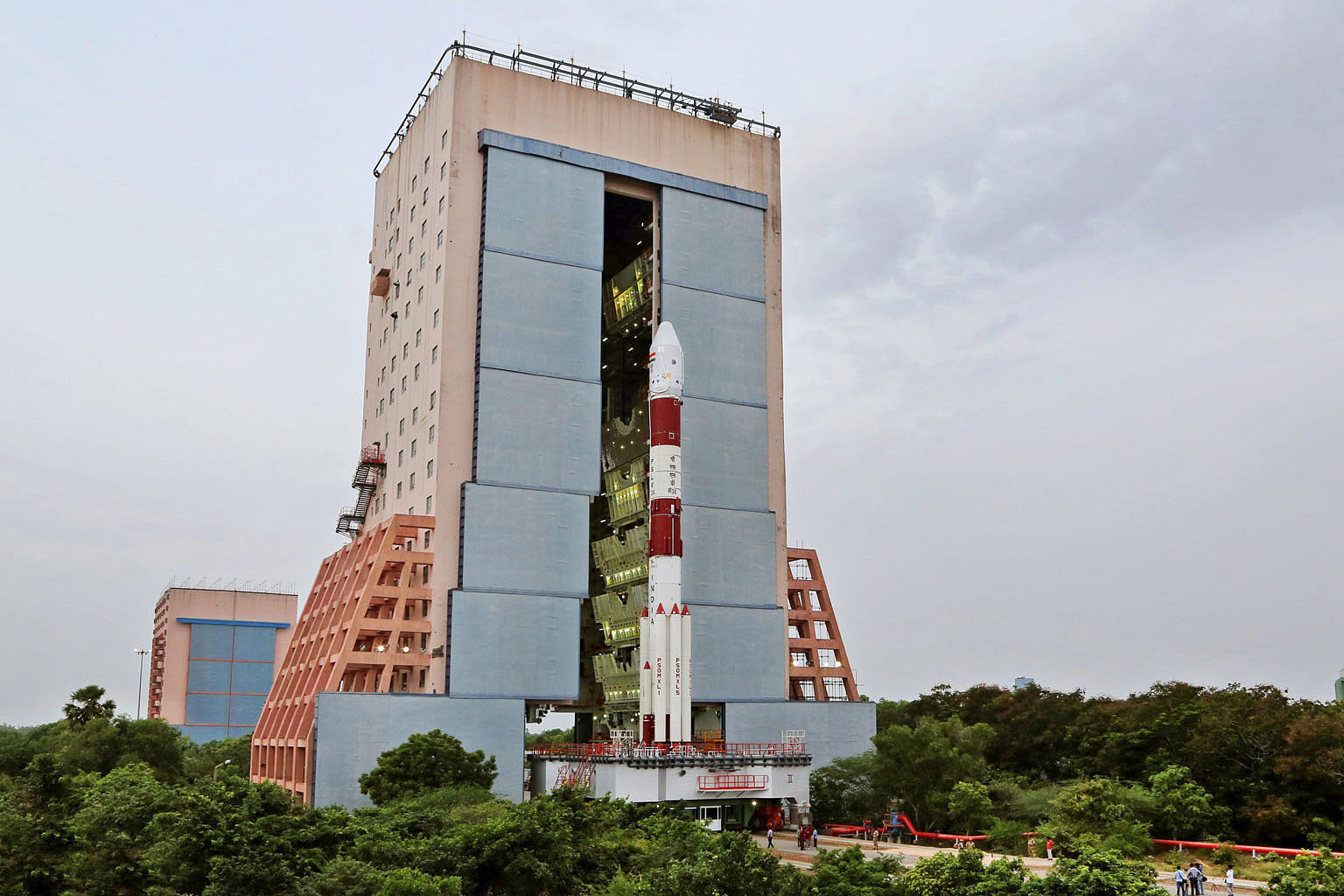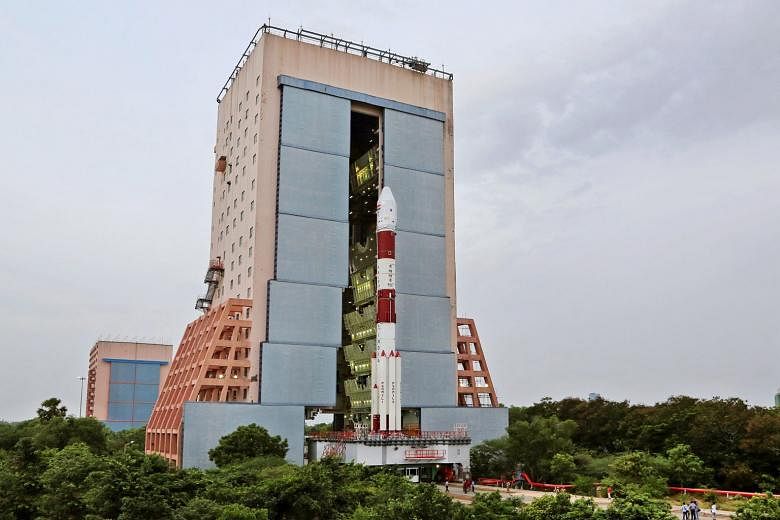In the 1960s, a handful of scientists started work on India's space programme in a church in the southern state of Kerala.
The church, donated by the local priest, was in Thumba, a coastal village near the earth's magnetic equator, ideal for conducting atmospheric research. The first launch was a United States-made rocket in 1963, using a launch pad built among coconut groves nearby.
Half a century later, India's space programme has grown to become a leader in the US$300 billion (S$406.3 billion) global space industry, earning envy for its reliable, low-cost launches and attracting a growing global clientele.
Last week, an Indian-built rocket, the Polar Satellite Launch Vehicle (PSLV), made headlines by launching 20 satellites successfully into space. Most were for foreign customers, including the US, Canada and Indonesia.
About 6,000 scientists and engineers at the India Space Research Organisation (Isro) worked for months on the launch, which took place at the Satish Dhawan Space Centre in Sriharikota, in Andhra Pradesh.
The latest success, scientists said, showed how India's space programme has grown and grabbed international attention.
"One by one, we went on building. We had to develop many things which we could not buy in the open market... because of a lot of embargoes. We used to be happy when someone said they would not sell something, so we could build it," said Professor U.R. Rao, a leading space scientist who was responsible for the development of the PSLV and a former Isro chairman.

India faced bans on the sale of many high-tech items following nuclear tests in the 1980s and 1990s, meaning Indian scientists had to build everything from remote-sensing satellites and rockets to the cameras on the satellites.
"Today, our facilities match other facilities in the world," Prof Rao told The Straits Times.
Over the past two decades, India has sent 74 foreign satellites, including eight from Singapore, into space. The programme, geared more towards improving satellite communications and remote- sensing applications such as weather forecasting, has branched out into space exploration.
In September 2014, Isro's Mars Orbiter successfully made it to Mars, making India the first nation in Asia to reach the Red Planet after China failed to do so. The orbiter cost around US$70 million, compared with the US$671 million spent by Nasa on its probe, Maven. A mini version of a Hubble telescope and a navigation system with seven navigation satellites have followed.
India's capabilities, though, have spawned concerns among private foreign firms, which fear satellite launches could move to India where costs are about 30 per cent to 40 per cent cheaper.
Some leaders of America's private space industry told the US Congress in April that they were against the large-scale use of Isro rockets for US satellites, saying it would hurt the industry, in part because they believed the launches were being subsidised by the Indian government and could price other competitors out of the market.
India's government said it does not subsidise launches but Isro has received a jump in funding since Prime Minister Narendra Modi came to power in 2014. For the 2016/17 financial year, government funding of the agency is 75.1 billion rupees (S$1.5 billion), up from 60 billion rupees two years ago.
Costs remain low because of lower wages for its professionals, cheaper cost of parts and production, the decision to keep the payload size small ,and the use of smaller rockets.
"Isro's launch vehicle is no different in terms of reliability and quality from others. India has the advantage of cost simply because of operational costs in terms of payments to experts and professional overheads," said Dr K. Kasturirangan, another former Isro chairman.
The space programme remains a source of pride even when the launches of the geosynchronous satellite launch vehicle (GSLV), the heavier rocket launcher, failed twice in 2010 and 2011.
Dr Mahajan Shrinivas Padmakar, a professor at the College of Engineering in Pune, which sent a ham radio satellite into space on the latest launch, said his students' experience working with Isro scientists, many of them first-generation engineers, had been an eye-opener.
"They mentored the students. Scientists would come and reach out to the students. They helped in launching the satellite free of cost. For everything, we got their help," he said of the project that started in 2008.
The agency is now hoping to ramp up its commercial activities, send up 70 more satellites in the next five years and test a heavier satellite launcher called the GSLV Mark 3.
Said Dr Kasturirangan: "The priest in one of the churches willingly vacated a place of prayer for the space programme. It proved to be a good omen for this country."



